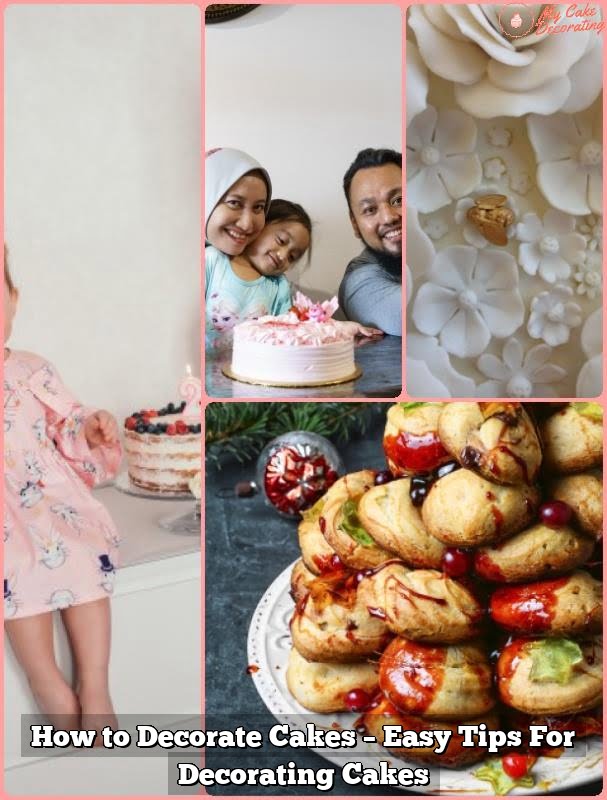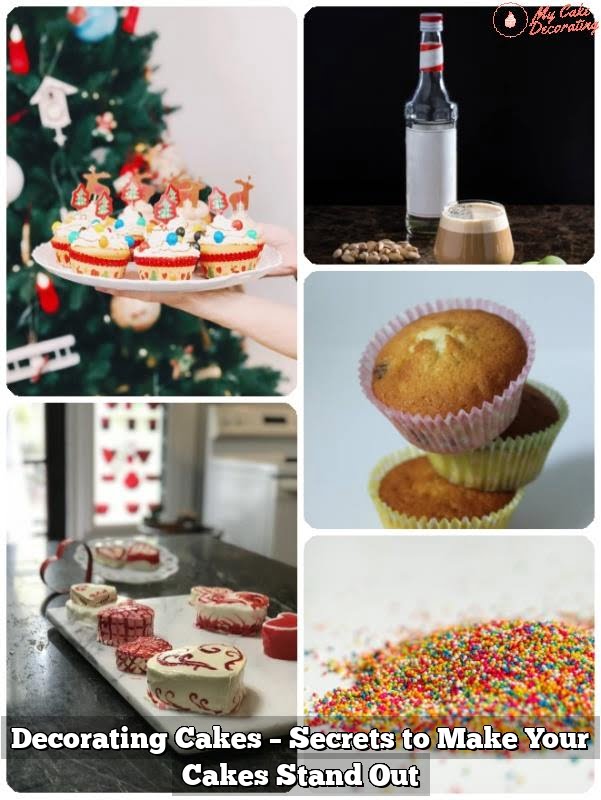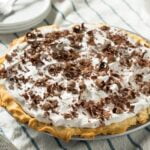Are you wondering what do you decorate cakes with? Cake decoration is an art form that allows bakers and decorators to showcase their creativity and skill. Whether it’s a simple birthday cake or an elaborate wedding cake, the right frosting, icing, and decorations can take a cake from ordinary to extraordinary.
When it comes to decorating cakes, there are numerous options for creating visually stunning treats. From different types of frosting and icing to edible and non-edible decorations, the possibilities are endless. In this article, we will explore the various elements that go into cake decoration, including the tools and techniques used to create beautiful and delicious works of art.
By understanding the art of cake decoration and learning about the different types of frosting, edible decorations, non-edible adornments, tools, equipment, techniques, tips, and tricks involved in decorating cakes, you can elevate your skills as a baker or decorator. So whether you’re a beginner looking to enhance your skills or an experienced pro wanting to try new techniques, this article will guide you through the world of cake decoration.
Types of Frosting and Icing for Cake Decoration
When it comes to decorating cakes, one of the most important elements is the type of frosting and icing used. The right choice can make all the difference in achieving the desired look and taste for your cake. There are several options available, each with its own unique characteristics and uses.
Buttercream
Buttercream is a classic choice for cake decoration. It is made with butter, powdered sugar, and flavorings such as vanilla or cocoa. Buttercream is known for its smooth texture and ability to hold intricate designs when piped onto cakes. It is versatile and can be tinted with food coloring to create vibrant decorations.
Fondant
Fondant is a pliable icing that can be rolled out and draped over cakes to create a smooth, flawless finish. It provides a sleek and professional look to cakes and has become increasingly popular for wedding cakes and special occasions. Fondant can also be shaped into various decorations such as flowers, bows, and ribbons.
Royal Icing
Royal icing is commonly used for intricate designs on cakes such as borders, flowers, and lace patterns. Made from powdered sugar, egg whites, and flavorings, royal icing dries hard, making it ideal for creating edible sculptures or three-dimensional decorations. Its versatility makes it a favorite among professional cake decorators.
These different types of frosting and icing offer a wide range of possibilities for decorating cakes. Depending on the desired look and feel of the cake, each option provides unique attributes that can elevate the overall design. Whether you choose buttercream for its versatility, fondant for its flawless finish, or royal icing for intricate designs, mastering these different types of frosting will greatly enhance your cake decoration skills.
Edible Decorations for Cakes
When it comes to decorating cakes, edible decorations play a crucial role in adding flavor, texture, and visual appeal to the finished product. There are numerous options for embellishing cakes with edible items that can elevate the overall look and taste of the dessert. From fresh fruit to chocolate shavings, the possibilities are endless.
Fresh Fruit
Fresh fruit is a popular choice for decorating cakes as it adds a natural sweetness and vibrant colors to the dessert. Slices of strawberries, kiwi, mango, and raspberries can be arranged on top of the cake or used as a filling between layers. Edible flowers such as roses, pansies, and violets can also serve as beautiful decorations for cakes.
Candy and Chocolate
Candy and chocolate are versatile options for adding both decoration and flavor to cakes. Melted chocolate can be drizzled over the cake for an elegant finish, while chocolate curls or shavings can be sprinkled on top. Candy such as sprinkles, gummy bears, or edible pearls can also be used to add a playful touch to the cake.
Edible Gold Leaf
For a luxurious touch, edible gold leaf can be used to decorate cakes. This delicate and shimmering decoration is often used for special occasions such as weddings or anniversaries. Edible gold leaf can be carefully applied to the surface of the cake to create an elegant and opulent appearance.
Non-Edible Decorations for Cakes
When it comes to decorating cakes, non-edible decorations can add an extra level of creativity and beauty to your baked creations. While edible decorations such as frosting and icing are essential for taste, non-edible decorations are perfect for adding flair and visual appeal to your cakes. So, what do you decorate cakes with that are non-edible? Let’s explore some popular options.
One popular choice for non-edible cake decorations is fresh flowers. These can be used to add a natural and elegant touch to any cake. It’s important to note that not all flowers are safe to use as cake decorations, so it’s crucial to do your research and ensure that the flowers you choose are non-toxic.
Another option is using ribbons or fabric as decorative elements for cakes. This can be a great way to add texture, color, and even a touch of whimsy to your cake design.
In addition to fresh flowers and ribbons, other non-edible decorations for cakes include figurines, jewelry, beads, or even small trinkets that fit the theme of the cake design. These items can be placed on top of the cake or around the base as part of the overall presentation. When using non-edible decorations, it’s important to consider how they will complement the overall look and feel of the cake while also being mindful of food safety guidelines.
| Non-Edible Decorations | Description |
|---|---|
| Fresh Flowers | Can add a natural and elegant touch |
| Ribbons or Fabric | Adds texture, color, and whimsy |
| Figurines, Jewelry, Beads | Complements the theme of the cake design |
Tools and Equipment for Cake Decoration
When it comes to decorating cakes, having the right tools and equipment is essential for achieving professional-looking results. From piping bags to offset spatulas, there are a variety of items that can help take your cake decoration skills to the next level.
One of the most important tools for cake decoration is the piping bag. Piping bags allow you to apply frosting or icing in a controlled manner, making it easy to create intricate designs and patterns on your cakes. Coupled with different piping tips, such as round, star, and petal tips, piping bags are versatile instruments that can be used to achieve a wide range of decorative effects.
Aside from piping bags, offset spatulas are also indispensable for cake decoration. These angled spatulas make it easy to spread frosting evenly across the surface of a cake and create smooth finishes. They are also useful for lifting and placing delicate decorations onto cakes without disturbing the frosting underneath.
Other essential tools for cake decoration include decorating combs for creating textured finishes, flower nails for forming delicate sugar flowers, and turntables for effortlessly rotating cakes while decorating. With the right tools and equipment at your disposal, you can elevate your cake decoration skills and create visually stunning treats that are sure to impress.
Techniques for Cake Decoration
Cake decoration is an art form that allows for creativity and personal expression. Mastering various techniques can take your cake decorating skills to the next level, creating visually stunning and delicious works of art. Whether you are a beginner or have some experience in cake decoration, learning different techniques can add a new dimension to your creations.
Some Popular Techniques for Cake Decoration Include
- Piping: Piping is the process of using a pastry bag to create various designs with frosting or icing. This technique allows for intricate details, such as flowers, borders, and lettering.
- Fondant Art: Fondant is a pliable sugar dough that can be rolled out and draped over cakes for a smooth, flawless finish. It also allows for sculpting and shaping into intricate designs and figures.
- Brush Embroidery: This technique involves using a thin paintbrush to create delicate floral patterns on cakes using thick royal icing or buttercream.
Additional Advanced Techniques Include
- Airbrushing: Utilizing an airbrush machine with edible food colors to create smooth gradients and shaded effects on cakes.
- Isomalt Decorations: Isomalt is a sugar substitute that can be melted down and molded into clear, glass-like decorations such as jewels or ribbons.
- Ruffle Effect: Creating ruffled textures on cakes using either fondant or buttercream for an elegant and stylish look.
Mastering these techniques requires practice, patience, and precision. By incorporating these methods into your cake decoration repertoire, you can elevate the visual appeal of your creations while honing your skills as a decorator.
Experimenting with different techniques will not only enhance the aesthetic value of your cakes but also provide you with the opportunity to express your creativity in unique ways. With dedication and persistence, you can master these various cake decoration techniques to become an accomplished cake decorator.
Tips and Tricks for Decorating Cakes
Decorating cakes can be a fun and enjoyable activity, but it also requires some tips and tricks to achieve the best results. Whether you are a beginner or an experienced baker, there are always new techniques and ideas to learn when it comes to cake decoration.
Here are some tips and tricks for decorating cakes:
- Use a turntable: A turntable is a valuable tool for cake decoration as it allows you to easily rotate the cake while working on it. This makes it easier to apply frosting and decorations evenly around the cake.
- Piping bags and tips: Invest in a variety of piping bags and tips to create different designs with icing. From simple lines and dots to intricate floral patterns, piping bags and tips are essential for creating beautiful decorations on cakes.
- Freeze your cake layers before assembling: Freezing the cake layers for about 30 minutes before assembling the cake can make it easier to frost and decorate. It helps prevent crumbs from mixing with the frosting and creates a smoother surface for decoration.
- Experiment with different textures: Try using various edible decorations such as fondant, chocolate shavings, fresh fruits, or edible flowers to add texture and visual interest to your cakes. Mixing different textures can elevate the overall appearance of your cake.
- Practice patience: Cake decoration is an art that requires patience. Take your time when applying frosting or adding decorations, and don’t rush the process. With patience and practice, you’ll be able to create stunning designs on your cakes.
By incorporating these tips and tricks into your cake decorating routine, you can enhance your skills and create beautiful, professional-looking cakes that will impress anyone who sees them. Remember that practice makes perfect, so keep experimenting with new techniques and have fun with the creative process.
Conclusion
In conclusion, the art of cake decoration is a delightful and creative pursuit that allows for endless possibilities. Whether you choose to use frosting, icing, edible decorations, or non-edible embellishments, there are a myriad of ways to express your creativity and elevate your cake decoration skills.
Experimenting with different types of frosting and icing can add depth and texture to your cakes. From buttercream to fondant, each type offers its own unique characteristics that can be used to achieve different effects. Edible decorations such as fresh fruit, edible flowers, or even handmade sugar sculptures can add a beautiful and delicious touch to any cake. On the other hand, non-edible decorations like ribbons, cake toppers, or themed figurines can help set the tone for any celebration.
Having the right tools and equipment is essential for successful cake decorating. From piping bags and tips to offset spatulas and turntables, these tools can make the process easier and more precise. Additionally, mastering techniques such as smoothing buttercream or creating intricate designs with royal icing can take your cake decorating skills to the next level.
With practice, patience, and a willingness to learn new tricks and techniques, anyone can become proficient in the art of cake decoration. So whether you’re an amateur baker looking to improve your skills or a professional pastry chef seeking inspiration for your next creation, there’s always something new to discover in the world of cake decorating.
What do you decorate cakes with ultimately comes down to your personal style and artistic vision; let your imagination run wild as you explore the endless possibilities for creating stunning edible works of art.
Frequently Asked Questions
What Do You Use to Decorate Cakes?
I use various tools and ingredients to decorate cakes, such as icing, fondant, piping bags, edible glitters, and food coloring. These help me create intricate designs and add vibrant colors to the cake.
What Do Bakers Use to Decorate Cakes?
Bakers typically use a range of tools and techniques for decorating cakes, including piping tips, spatulas, stencils, molds, and edible embellishments like flowers or chocolate decorations. These allow bakers to create unique and visually appealing designs on their cakes.
What Are the 5 Kinds of Cake Decorating?
The five main kinds of cake decorating are buttercream decorating, fondant decorating, royal icing decorating, gum paste decorating, and marzipan decorating. Each method offers different textures and finishes for cake decoration, catering to various tastes and preferences.

Welcome to my blog about home and family. This blog is a place where I will share my thoughts, ideas, and experiences related to these important topics. I am a stay-at-home mom with two young children. I hope you enjoy reading it! and may find some helpful tips and ideas that will make your home and family life even better!





